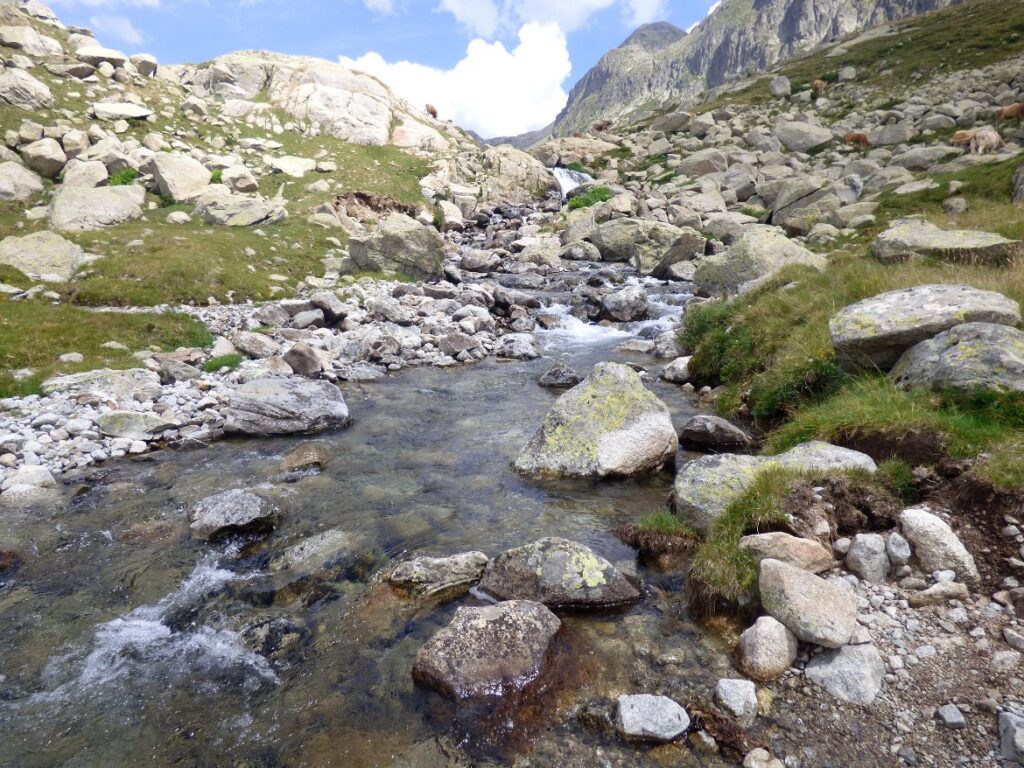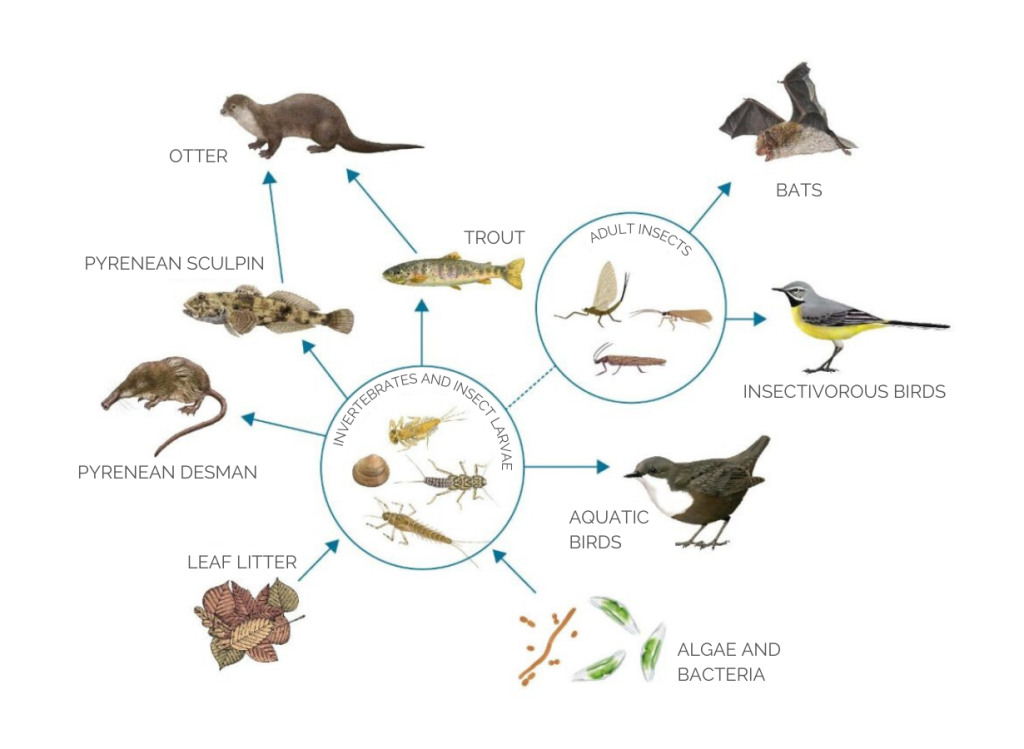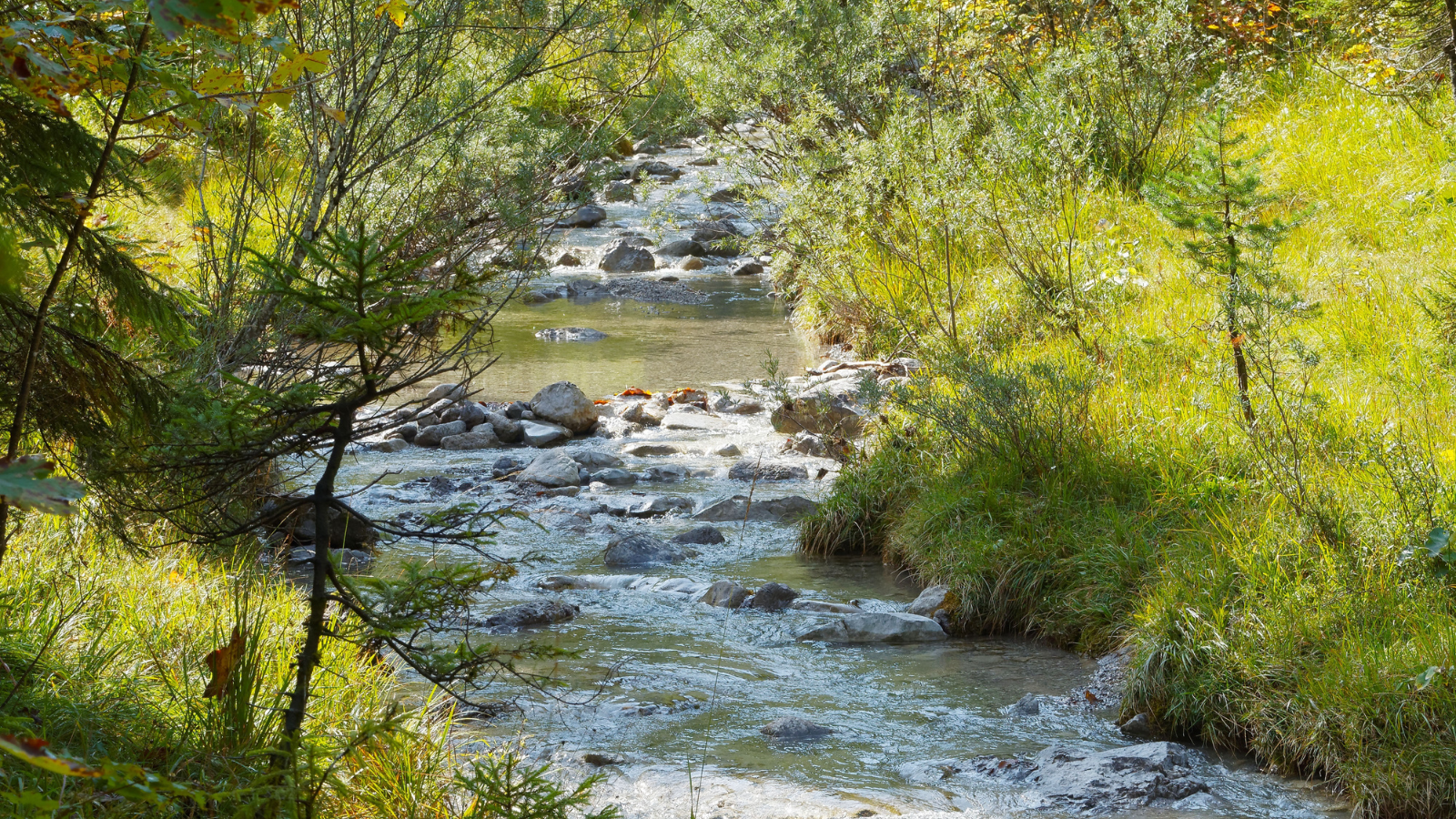High mountain streams and rivers have one main characteristic: their flow is highly influenced by snow. As a result, the water volume changes significantly throughout the year, peaking in spring when the snow melts rapidly, which can cause major floods.
Extreme conditions at the headwaters
These ecosystems, especially at the headwaters, can freeze completely or partially for several months of the year, during which the flow is minimal. Additionally, they may experience a second minimum in the summer, which can be very pronounced in dry and warm years. The water is always cold, with daily average temperatures ranging from a few degrees below zero to 16°C throughout the year.
Moreover, these waters have low mineral content and are often acidic. However, these extreme characteristics of the headwaters become more moderate downstream.
Alternating zones and biodiversity
Another aspect that affects the organisms living there is the combination of areas with gentle slopes, where the water flows slowly, and areas with steep slopes, where the water runs quickly, creating small waterfalls. This change in environmental conditions at different altitudes greatly influences the variety of life found there.
In the headwaters and upper reaches, there are organisms adapted to very cold water, including many endemic Pyrenean species of aquatic flora and fauna, as well as relict species that became isolated after the last glaciation.
The role of the tree line
The tree line is another factor that affects these rivers, as it controls the amount of organic matter that enters the rivers and the amount of sunlight they receive. We can distinguish two sections in high mountain rivers: above and below the tree line.
- Above the Tree Line: Fast-Flowing and Highly Diluted Waters
In the sections above the tree line, the metabolic activity, which is not very intense, tends to be primarily autotrophic. Since the vegetation in the basin is usually sparse and contains a high proportion of rock, it contributes little allochthonous organic matter to the river. This means that the river’s metabolism is dominated by the primary production of microscopic algae (mainly diatoms) and cyanobacteria that live on the rocks and pebbles of the riverbed.

The food web in these sections is simple, with large predatory insect larvae and insects that feed on plants and other materials.
- Below the Tree Line: Greater Transport of Organic Matter and Biodiversity
In contrast, when the rivers enter forested areas, their metabolism becomes primarily heterotrophic; that is, it relies more on the decomposition of organic matter, such as leaves and branches that fall from the trees. These leaves are often preserved under the snow during the winter and are washed into the river in the spring. This ensures a steady supply of allochthonous organic matter, which serves as food for shredders, such as nemourid stoneflies and elmidae beetles. The diversity and biomass of detritivores, such as chironomids and leuctrid stoneflies, also increase significantly. In this section, aquatic fungi play an important role in the slow process of decomposing organic matter deposited in the riverbed, which continues for months during the cold winter.
Among the primary producers, in addition to diatoms and microscopic green algae as in the previous section, red mountain algae also appear, which, due to their maroon, feather-like appearance, are visible to the naked eye.
The food web in these areas is more complex than in the higher-altitude sections, with the presence of large predators such as the brown trout, the Pyrenean desman, and the dipper, which prey on aquatic larvae, and bats, which feed on the adults that emerge from the aquatic insect larvae.





